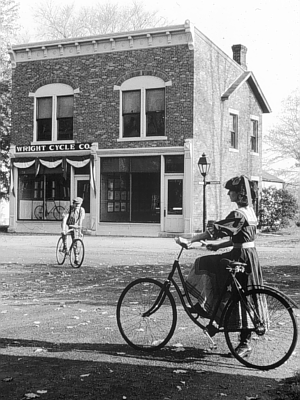
1902 glider and camp

Immediately upon our return to Dayton, we wrote to a number of automobile and motor builders, stating the purpose for which we desired a motor, and asking whether they could furnish one that would develop eight-brake horse power, with a weight complete not exceeding 200 pounds. Most of the companies answered that they were too busy with their regular business to undertake the building of such a motor for us; but one company replied that they had motors rated at 8 h.p. according to the French system of ratings, which weighed only 135 pounds, and that if we thought this motor would develop enough power for our purpose, they would be glad to sell us one. After an examination of the particulars of this motor, from which we learned that it had but a single cylinder of 4 inch bore and 5 inch stroke, we were afraid that it was much overrated. Unless the motor would develop a full 8 brake horse power, it would be useless for our purpose.
Finally we decided to undertake the building of the motor ourselves. We estimated that we could make one of four cylinders with 4 inch bore and 4 inch stroke, weighing not over two hundred pounds, including all accessories. Our only experience up to that time in the building of gasoline motors had been in the construction of an air-cooled motor, 5 inch bore and 7 inch stroke, which was used to run the machinery of our small workshop. To be certain that four cylinders of the size we had adopted (4" x 4") would develop the necessary 8 horse power, we first fitted them into a temporary frame of simple and cheap construction. In just six weeks from the time the design was started, we had the motor on the block testing its power. The ability to do this so quickly was largely due to the enthusiastic and efficient services of Mr. C.E. Taylor, who did all the machine work in our shop for the first as well as the succeeding experimental machines. There was no provision for lubricating either cylinders or bearings while this motor was running. For that reason it was not possible to run it more than a minute or two at a time. In these short tests the motor developed about nine horse power. We were then satisfied that, with proper lubrication and better adjustments, a little more power could be expected. The completion of the motor according to drawing was, therefore, proceeded with at once.
